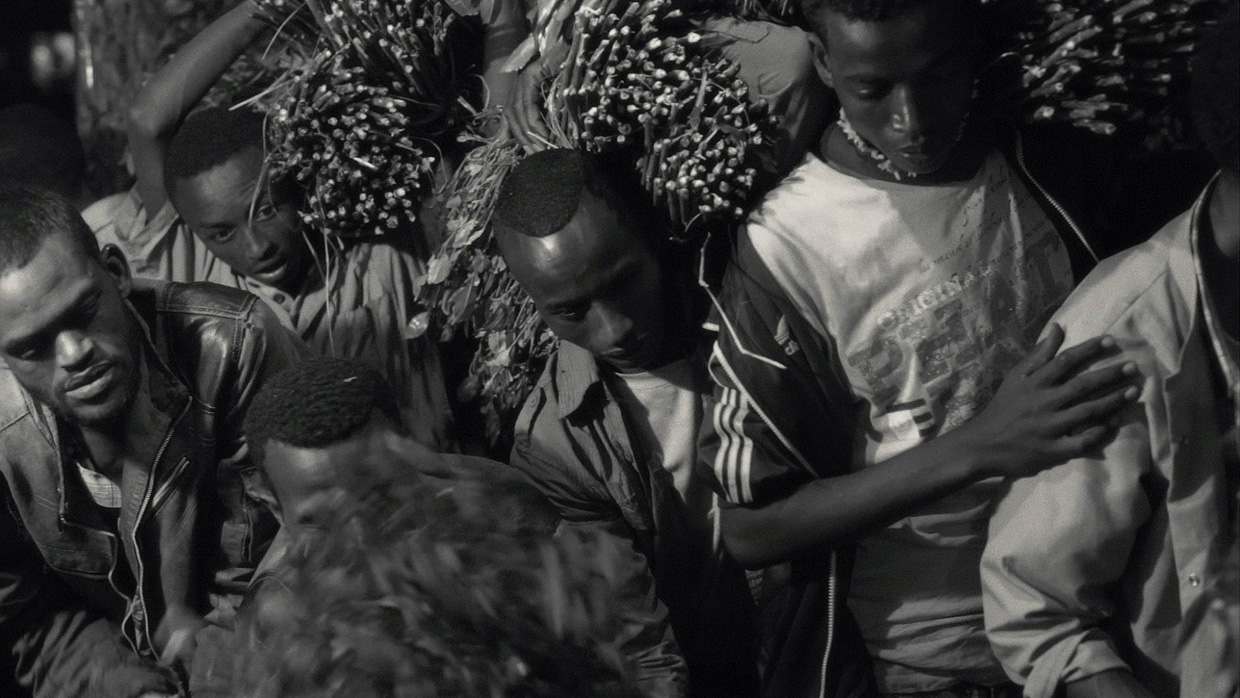 Back to selection
Back to selection
“I Wanted to Experience Intimacy With the People I Was Filming”: DP Jessica Beshir on Faya Dayi
 Faya Dayi
Faya Dayi Jessica Beshir’s feature debut Faya Dayi is all about khat, a plant native to Ethiopia harvested and known for its euphoric properties when chewed. On another level, the film is about khat’s cultural significance as a major cash crop, analyzing its role both economically, socially, and generationally. Beshir tells us why she decided to take on the role of DP for her own film.
Filmmaker: How and why did you wind up being the cinematographer of your film? What were the factors and attributes that led to your being hired for this job?
Beshir: I started filming Faya Dayi as a very personal way of reconnecting with Harar, the place I grew up in. I wanted to experience intimacy with the people I was filming, be it friends, family and everyone I met so that’s how I ended up becoming my own cinematographer.
Filmmaker: What were your artistic goals on this film, and how did you realize them? How did you want your cinematography to enhance the film’s storytelling and treatment of its characters?
Beshir: I wanted to transmit the strong sense of Sufi spirituality that permeates life in Harar, the mood of the place. At the center of the film there is a legend of how Sufi mystics found khat and of the genesis of light and darkness. I wanted to imbue the whole film with this concept so I went for shadows and black and white.
Filmmaker: Were there any specific influences on your cinematography, whether they be other films, or visual art, of photography, or something else?
Beshir: The work of Pedro Costa, Bradford Young, Charles Burnett, Lav Diaz.
Filmmaker: What were the biggest challenges posed by production to those goals?
Beshir: I was fortunate that this film made itself. Opportunities presented themselves in ways that I could have never planned or imagined. All I had to do was be present and ready.
Filmmaker: What camera did you shoot on? Why did you choose the camera that you did? What lenses did you use?
Beshir: I started shooting on 5D II for the most part because it was a light camera to travel with and that’s what I could afford. Towards the end I upgraded to a 5D IV and added an old C300 I that I bought from a friend. I used a Zeiss Planar T* 50mm f/1.4, Nikkor 35mm f/2, Nikkor 85mm f/2, Soligor 20mm f/2.8, Canon 24-70mm f/2.8L USM I.
Filmmaker: Describe your approach to lighting.
Beshir: I used available light.
Filmmaker: What was the most difficult scene to realize and why? And how did you do it?
Beshir: The scene in the movie theater was the hardest because it was my last day and we were only given an hour to film in that space. Ultimately, the time limit worked in my favor because I had no time to think, I just shot the scene.
Filmmaker: Finally, describe the finishing of the film. How much of your look was “baked in” versus realized in the DI?
Beshir: I shot RAW and LOG. All was DI.
TECH BOX
Film Title: Faya Dayi
Camera: 5D MK II, 5D MK IV, C300 I
Lenses: Zeiss Planar T* 50mm f/1.4, Nikkor 35mm f/2, Nikkor 85mm f/2, Soligor 20mm f/2.8, Canon 24-70mm f/2.8L USM I.
Lighting: Available light
Processing: Digital
Color Grading: Alan Gordon, DaVinci Resolve
